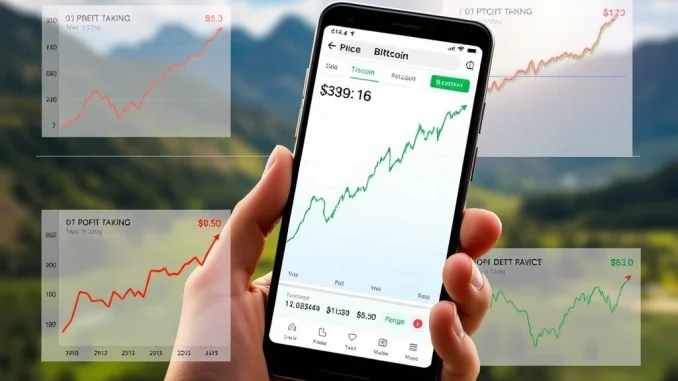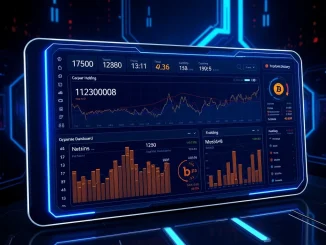
Bitcoin recently reached impressive highs, sparking excitement across the market. However, beneath the surface, data reveals significant activity that could signal a shift. Are we heading for a pause? Let’s dive into what the data on Bitcoin and its holders is telling us.
Understanding Bitcoin Profit Taking
One of the most watched indicators in the crypto market is the behavior of different holder groups. Specifically, short-term holders (STHs) – those who have held Bitcoin for less than 155 days – often provide insights into market sentiment and potential price movements. When these holders begin selling, it typically means they are realizing gains.
Recent data from Coinglass, highlighted by Cointelegraph, shows that STHs have engaged in substantial profit taking. Over the past 30 days, these holders have locked in a staggering $11.6 billion in profits. This level of selling pressure from short-term participants is a key factor to consider when evaluating the market’s immediate future.
What Does STH Profit Taking Signal?
While profit realization is a natural part of any bullish cycle, the scale of recent STH selling is noteworthy. Historically, periods of intense profit taking by short-term holders have often preceded local tops or periods of consolidation and market cooldown.
Think of it this way: As Bitcoin’s price climbs rapidly, newer investors (STHs) see their investments quickly turn profitable. Many choose to sell to secure these gains. This influx of selling volume can absorb buying pressure and reduce the momentum driving the price upward.
Is Bitcoin’s Price Momentum Slowing?
Complementing the profit-taking data, other indicators also suggest a potential shift in market dynamics. Crypto analyst Axel Adler Jr. pointed out that Bitcoin’s 30-day price momentum has seen a significant drop, falling by 38% recently. A decline in momentum indicates that the rate at which the price is increasing is slowing down.
This slowdown in momentum, coupled with the high volume of STH profit taking, paints a picture of a market that might be losing some steam. It doesn’t necessarily mean a crash is imminent, but it does suggest that the rapid upward trajectory seen recently might need a pause to consolidate before any further significant gains can be made.
External Factors Influencing Bitcoin
Market dynamics aren’t solely driven by on-chain data and internal momentum. External macroeconomic and political events can also play a role. For instance, Bitcoin experienced a pullback to around $108,000 after news broke about potential new U.S. tariffs. U.S. President Donald Trump announced a proposed 50% tariff on European Union imports, set to take effect on June 1.
Such announcements can increase market uncertainty and lead investors to reduce risk exposure, including in volatile assets like Bitcoin. This highlights how global events can interact with internal market signals like profit taking and changing price momentum to influence short-term price movements.
Key Takeaways for Investors
- High STH Profit Taking: $11.6 billion in profits realized by short-term holders in 30 days is a significant volume, often seen near local market tops.
- Slowing Momentum: Bitcoin’s 30-day price momentum dropping by 38% supports the idea of a potential slowdown.
- Potential Cooldown: These signals combined suggest the market may enter a phase of consolidation or a market cooldown before resuming upward movement.
- External Risks: Geopolitical and economic news, like tariff announcements, can add volatility and pressure.
For those watching the market, paying attention to the behavior of short-term holders and changes in price momentum is crucial. While the long-term outlook for Bitcoin may remain bullish for many, these short-term indicators suggest prudence might be warranted in the immediate future.
Conclusion: Navigating the Signals
The recent surge in Bitcoin’s price has been exciting, but the substantial profit taking by short-term holders and the noticeable drop in price momentum serve as important signals. These indicators, alongside external economic factors, point towards the possibility of a market cooldown. Understanding these dynamics helps investors make informed decisions in a volatile market. While a pause might be on the horizon, it’s a natural part of market cycles and could set the stage for future moves.



